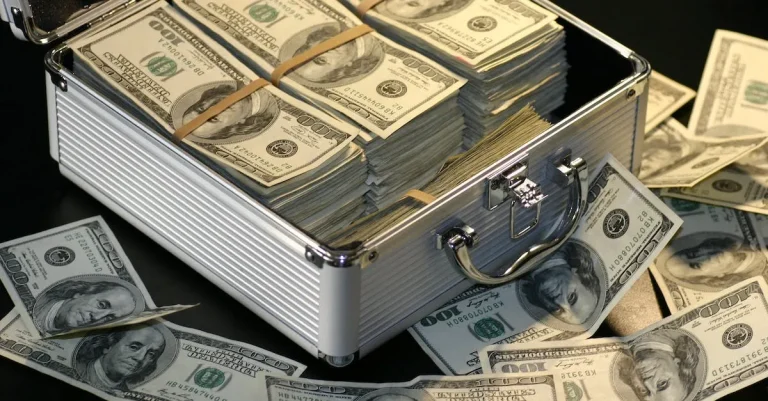How Much Is A Porcelain Doll Worth? A Detailed Guide
Porcelain dolls have been cherished by collectors for decades. Their delicate beauty and intricate craftsmanship make them a prize for any doll enthusiast.
But if you’ve inherited a porcelain doll or are looking to start your own collection, you may be wondering – how much is a porcelain doll actually worth?
If you’re short on time, here’s a quick answer: Porcelain doll values typically range from $40-60 for newer mass-produced dolls up to $2,000 or more for rare antique dolls in pristine condition.
Many factors like age, brand, condition, rarity, and demand determine the true value.
What Makes Porcelain Dolls Valuable
Porcelain dolls have been cherished collectibles for many years, and their value can vary greatly depending on several factors.
Understanding these factors can help collectors and enthusiasts determine the worth of a porcelain doll. Here are some key elements that contribute to the value of porcelain dolls:
Age and Era of Production
The age and era of production of a porcelain doll play a significant role in determining its value.
Older dolls, especially those from the 19th century or earlier, tend to be more valuable due to their historical significance and rarity.
Dolls from popular eras, such as the Victorian era or the Roaring Twenties, often command higher prices.
Brand Name and Manufacturer
The brand name and manufacturer of a porcelain doll can greatly impact its value.
Dolls made by renowned manufacturers such as Jumeau, Bru, or Kestner are highly sought after by collectors and can fetch high prices in the market.
The reputation and craftsmanship associated with these brands elevate the value of their dolls.
Condition and Restoration
The condition of a porcelain doll is crucial in determining its value. Dolls in excellent condition, with minimal wear, intact clothing, and original accessories, are more valuable than those with visible damages or missing parts.
However, it is important to note that professional restoration, when done properly, can enhance the value of a doll by bringing it back to its original glory.
Rarity and Desirability
The rarity and desirability of a porcelain doll also contribute significantly to its value. If a doll is rare and highly sought after by collectors, its value can skyrocket.
Factors such as limited production runs, unique features, or dolls associated with famous individuals can make them highly desirable and increase their worth.
It is worth mentioning that determining the exact value of a porcelain doll can be a complex process.
Factors such as market demand, current trends, and individual preferences also come into play.
Consulting with experts, attending doll auctions, and researching recent sales can provide valuable insights into the current market value of specific dolls.
For further information on porcelain doll values, you can refer to reputable websites such as www.dollreference.com or www.antiquedolls-collectors.com.
Most Valuable Antique Porcelain Dolls
French Fashion Dolls (1850s-1890s)
French fashion dolls from the 1850s to the 1890s are considered some of the most valuable antique porcelain dolls.
These dolls were meticulously crafted and dressed in the latest fashion trends of the time, making them highly sought after by collectors.
The craftsmanship and attention to detail in these dolls are truly remarkable, with their delicate porcelain heads, glass eyes, and intricate hairstyles. Some of the most famous French fashion doll makers include Jumeau, Bru, and Gaultier.
If you happen to come across a French fashion doll from this era, you may be in possession of a valuable treasure.
These dolls can fetch prices ranging from several hundred to several thousand dollars, depending on their condition, rarity, and provenance.
It’s important to note that the value of a doll can also be influenced by factors such as the originality of its clothing and accessories.
If you’re interested in learning more about French fashion dolls and their value, you can visit Antique Dolls Collectors Online Advisors for additional information.
German Bisque Dolls (1860s-1910s)
German bisque dolls from the 1860s to the 1910s are another category of antique porcelain dolls that hold significant value in the collector’s market.
These dolls were made with a special type of porcelain called bisque, which gives them a more realistic appearance compared to other types of dolls.
The German doll manufacturers, such as Kestner, Simon & Halbig, and Heubach, were known for their exceptional craftsmanship and attention to detail.
The value of German bisque dolls can vary greatly depending on factors such as the doll’s size, condition, rarity, and the presence of any unique features.
Some German bisque dolls have been known to sell for thousands of dollars at auctions and doll shows.
It’s important to research and consult with experts to accurately determine the value of a German bisque doll.
If you want to explore more about German bisque dolls and their worth, you can visit Doll Reference for additional insights.
Early American Dolls (1840s-1900s)
Early American dolls from the 1840s to the 1900s are highly prized by collectors for their historical significance and craftsmanship.
These dolls were typically made of porcelain, although some were also crafted from other materials like cloth or wax. The early American doll market was influenced by manufacturers such as Jumeau, Kestner, and Armand Marseille.
The value of early American dolls can vary greatly depending on factors such as their condition, rarity, and historical importance.
Certain dolls from renowned American manufacturers can be worth thousands of dollars, especially if they are in excellent condition and have original clothing and accessories.
Collectors and enthusiasts often frequent doll auctions and shows to acquire these valuable pieces.
If you’re interested in learning more about early American dolls and their value, you can visit Doll Reference for additional resources.
Factors That Decrease Porcelain Doll Values
Damage and Repairs
One of the most significant factors that can decrease the value of a porcelain doll is damage.
Porcelain dolls are delicate and can easily be damaged if not handled with care. Cracks, chips, or missing parts can significantly affect the doll’s value.
Doll collectors are often looking for dolls in pristine condition, so any visible damage can be a major deterrent for potential buyers.
Furthermore, any repairs done to a porcelain doll can also decrease its value. While repairs may be necessary to restore the doll’s beauty, they can be seen as alterations and may not be viewed favorably by collectors.
In some cases, poorly executed repairs can even further damage the doll and decrease its value even more.
It is important to note that not all damage or repairs automatically decrease a doll’s value. Some collectors may be willing to overlook minor imperfections if the doll is rare or has historical significance.
However, in general, it is safe to say that damage and repairs can have a negative impact on the value of a porcelain doll.
Mass Production
Another factor that can decrease the value of porcelain dolls is mass production.
In the past, some porcelain dolls were mass-produced, which means that there are many identical or similar dolls available in the market. This abundance reduces their rarity and, consequently, their value.
Collectors often seek out unique and limited-edition dolls that were not produced in large quantities.
These dolls are considered more valuable because they are harder to find and are often associated with renowned doll makers or specific time periods. On the other hand, mass-produced dolls lack this exclusivity and, therefore, tend to have lower values.
Newer Dolls
The age of a porcelain doll can also affect its value. Generally, older dolls are more sought-after and have higher values than newer ones.
This is due to the fact that older dolls are considered rare and often have a certain historical or sentimental value attached to them.
However, it is important to note that not all newer dolls are automatically less valuable. Some modern doll makers create exquisite and highly desirable porcelain dolls that can still hold significant value.
These dolls are often made in limited quantities and are sought after by collectors.
How to Determine Your Doll’s Value
When it comes to determining the value of a porcelain doll, there are several factors to consider.
From researching markings to consulting with appraisers, understanding these steps can help you get a better idea of how much your doll is worth.
Research the Markings
The first step in determining your doll’s value is to research its markings.
Most porcelain dolls have markings on the back of their necks or on their bodies that indicate the manufacturer, year of production, and sometimes the edition number.
By identifying these markings, you can gain insight into the doll’s origin and rarity, which can greatly impact its value.
There are various online resources and databases that can help you identify these markings and provide information about the doll’s history.
Websites like Doll Reference offer extensive databases of doll markings and manufacturers, making it easier for collectors to research and determine the value of their dolls.
Assess Age and Condition
Another crucial aspect in determining a porcelain doll’s value is assessing its age and condition.
Older dolls, especially those from the late 19th and early 20th centuries, are often considered more valuable due to their historical significance and rarity.
Additionally, dolls that are in excellent condition with minimal wear and tear, intact clothing, and original accessories tend to have higher values compared to those that are damaged or missing parts.
When evaluating the condition of your doll, it’s important to consider factors such as cracks, chips, discoloration, and any restoration work that may have been done.
Appraisers and experienced collectors can provide valuable insights into the condition of your doll and how it affects its value.
Compare Prices Online
One useful way to determine the value of your porcelain doll is by comparing prices online.
Online marketplaces and auction websites like eBay and Etsy often have listings for similar dolls, allowing you to see what others are asking for similar items. This can give you a general idea of the doll’s market value.
However, keep in mind that prices can vary greatly depending on factors such as rarity, condition, and demand. It’s essential to consider multiple sources and listings to get a more accurate understanding of your doll’s value.
Consult Appraisers
If you’re unsure about the value of your porcelain doll or want a more professional assessment, consulting with appraisers can be beneficial.
Appraisers have extensive knowledge and experience in valuing collectible items, including dolls. They can provide a detailed evaluation of your doll based on its unique characteristics, condition, and current market trends.
When choosing an appraiser, look for someone who specializes in dolls and has a good reputation.
Professional organizations such as the International Society of Appraisers and the Appraisers Association of America can help you find qualified appraisers in your area.
Remember, the value of a porcelain doll can fluctuate over time due to market trends and collector demand. It’s always a good idea to periodically assess the value of your doll to stay informed about its worth.
Conclusion
Porcelain dolls can range tremendously in value based on their age, origins, condition, rarity, brand, and other attributes.
While newer mass-produced dolls may fetch $40-60, highly sought-after antique dolls in mint condition can be worth several thousand dollars or more at auction.
Doing your research, examining your doll closely, checking online price guides, and consulting expert appraisers are the best ways to get an accurate estimate of your porcelain doll’s true market value.









